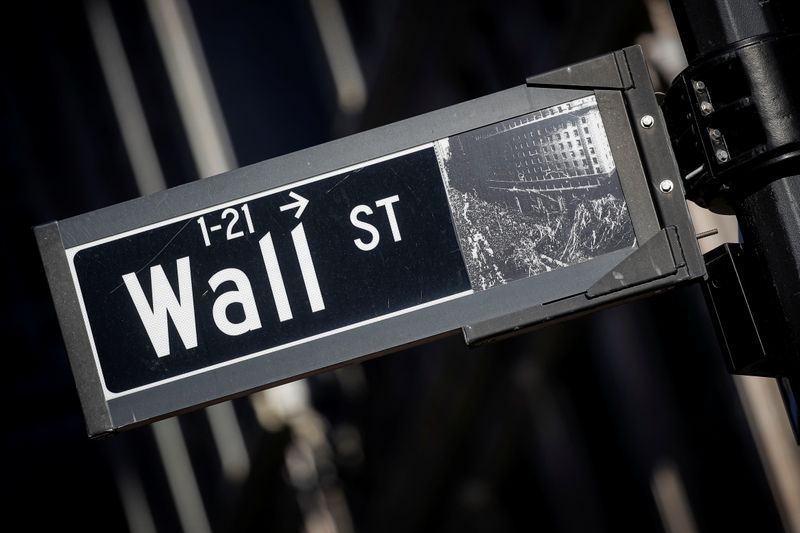 © Reuters Dow Jones, Nasdaq, S&P 500 weekly preview: AI has its 'iPhone moment'
© Reuters Dow Jones, Nasdaq, S&P 500 weekly preview: AI has its 'iPhone moment'
U.S. futures are trading mostly flat after the benchmark stock market index S&P 500 (SPX) finally broke out of the 3800-4200 trading range.
The S&P 500 rose 1.8% last week to hit the highest levels seen since August 2022. The index is approaching the critical resistance, near 4310, in the form of the 61.8% Fibonacci retracement of the January - October 2022 plunge.
It is worth noting that the S&P 500 recorded three consecutive monthly green candles, in addition to being up 2.5% in June already. Since the start of March, the index trades about 12.5% higher.
Nasdaq Composite Index (IXIC) added 2% to exceed the last August highs. Last week’s high is now the highest that the tech-heavy index traded in over 13 months.
The mega-cap-driven market rally means that the seven largest constituents of the S&P 500 have surged 53% vs. just 0% for the remaining 493 stocks, according to Goldman Sachs.
“The Nasdaq has been up sharply because it has been led by just a few names, but most groups of stocks outside of that have been down,” Rhys Williams, a portfolio manager at Spouting Rock Asset Management, told the WSJ.
“That really reflects how nervous people are about what it might mean to have no interest-rate cuts coming.”
Dow Jones Industrial Average (DJI) gained 2% last week.
Light earnings/economic calendar
On the economic data front, the biggest highlight is the ISM services report that is due later today. There will be no Fed officials speaking this week due to the blackout period leading up to the FOMC meeting on June 13-14.
As far as the earnings calendar is concerned, notable earnings reports include Academy Sports Outdoors (NASDAQ:ASO), Ciena Corp. (NYSE:CIEN), Campbell Soup (NYSE:CPB), United Natural Foods (NYSE:UNFI), and Nio (NYSE:NIO).
As much as 99% of S&P 500 companies reported actual results for the first quarter so far. According to FactSet, 78% of S&P 500 companies have reported a positive EPS surprise and 75% of S&P 500 companies have reported a positive revenue surprise.
The S&P 500 earnings fell 2.1% for the quarter, much better than the expected 6.7% decline.
“During the months of April and May, analysts lowered EPS estimates for the second quarter by a smaller margin than average,” said John Butters, the senior earnings analyst at FactSet.
What analysts are saying about US stocks
Goldman Sachs analysts: “The macro environment should remain supportive for stock-pickers given rising equity return dispersion and falling stock correlation.”
Citi analysts: “Mega Cap Tech/Growth is driving S&P 500 returns year-to-date. Yet, under the surface there are clear signs that investors remain concerned regarding recession risk. Now, artificial intelligence is a topic in most client conversations. Our views are mostly conceptual at this point. Credence must be given to upside risk related to the p-AI-n trade and light investors positioning. However, we remain fundamentally confident in our S&P 500 year-end index target of 4000 and related 3800-4200 trading range.”
BTIG analysts: “The S&P 500 finally broke out above 4,200 and is now into the area of the highs from last August (~4,300). Despite this breakout, the equal-weight S&P remains ~6% below those levels and ~7.5% below February levels. This can change, of course, and perhaps we saw the start of the long-awaited laggard rotation last week as small-caps get back to the upper end of their trading range. Upside Reversion can continue in the nearterm, but we remain skeptical on the big-picture sustainability of this rally.”
Roth MKM analysts: “We maintain an overall neutral view of the S&P 500 at this point, but acknowledge if the current leadership continues, it should be enough to keep the S&P 500 moving higher.”
Evercore ISI analysts: “ S&P 500 2023 PT to 4,450 from 4,150, 2023 EPSe to $214 from $206. At 20.8x, valuation above the midpoint of the past 30+ years, yet short of Momentum extremes in 1998-00 or 2021. EPS revised on margin “less bad” surprise, Labor strength and Pandemic Savings. “Momentum Markets” are volatile; 4,450 in a “Momentum Market” could arrive by July 4, not Christmas. Our Call will then depend on rally Participation from Small Caps and Banks vs. potential Postponement of the Recession.”

